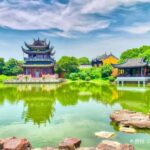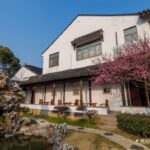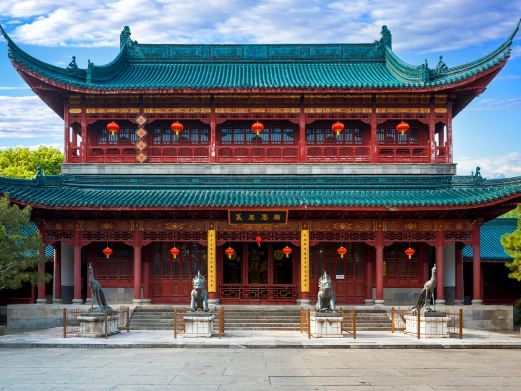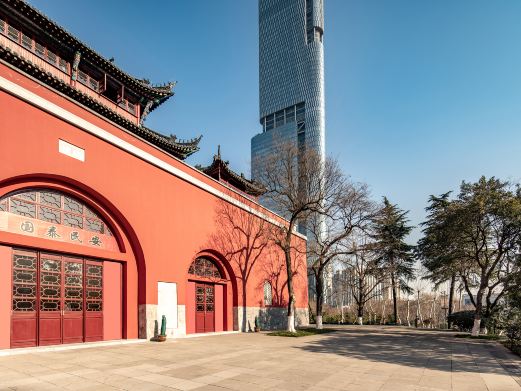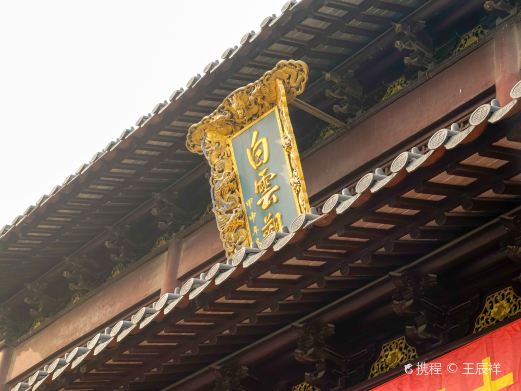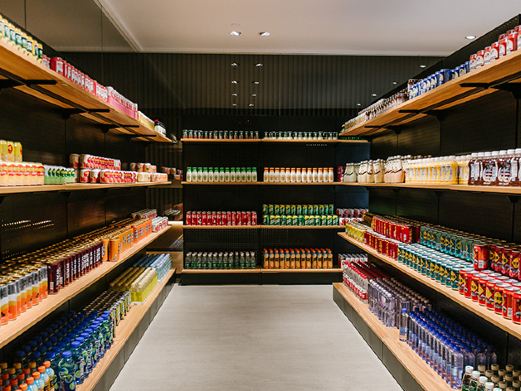Both Zhaoyuan Garden and Zengyuan Garden are part of the site of ‘Xiao Wangchuan’ originally built by Qian Dai, the censor in the Wanli period of the Ming Dynasty. During the Tongzhi and Guangxu periods of the Qing Dynasty, the garden belonged to Zhao Liewen of Yanghu. Zhao was a senior aide to Zeng Guofan. Later, it belonged to Sheng Xuanhuai of Wujin. Zengyuan Garden, originally known as Xukuo Garden, covers an area of more than 20 mu.
It was originally part of the site of ‘Xiao Wangchuan’ garden of Qian Dai, the censor in the Wanli period of the Ming Dynasty. It was purchased by the Zeng family during the Tongzhi period of the Qing Dynasty. It was built into a home by Zeng Zhizhuan, the official of the Ministry of Punishments in the Guangxu period of the Qing Dynasty. It has been more than 120 years. It has always been a famous classical garden in the south of the Yangtze River. Zeng Pu, a famous modern Chinese writer and translator, spent his childhood and old age in the garden. In terms of gardening art, the garden takes the relatively open water surface in the middle as the center and arranges garden scenery around the pool. Pavilions, terraces, towers and pavilions are scattered in an orderly manner. The rockery and water are arranged ingeniously. The corridor winds, the willow embankment lies on the waves, the flowers and trees are luxuriant. The scenery changes with each step, and it is extremely beautiful. In particular, Yushan Mountain is borrowed everywhere for scenery. The water and mountain scenery create a picturesque realm, making people relaxed and happy. It has become a leader among the famous classical gardens in the south of the Yangtze River. Zengyuan Garden is full of scenic spots and dazzling. It is famous far and near for sixteen scenic spots such as Guigeng Ketidu Lu, Shuitian Xianhua, Junzi Changsheng Room (now Zeng Pu Memorial Hall). Among them, the ancient ormosia tree and camphor tree are relics of the ‘Xiao Wangchuan’ garden in the Ming Dynasty. They are known as ‘two treasures’. They are still full of vitality and extremely precious. Zhaoyuan Garden, also known as Shuiwuyuan Garden, is adjacent to Zengyuan Garden. It was built during the Tongzhi and Guangxu periods of the Qing Dynasty. It was also originally part of the site of ‘Xiao Wangchuan’ garden of Qian Dai, the censor in the Wanli period of the Ming Dynasty. During the Jiaqing period of the Qing Dynasty, Wu Junji, a native of the county, planted bamboo and raised fish here. There is a pond and the fragrance of lotus spreads for several miles. Therefore, it is named ‘Shuiyuan Garden’. During the Tongzhi and Guangxu periods, Zhao Liewen, a native of Yanghu who resigned and lived in Changshu, renovated the garden and built ‘Tianfanglou’, ‘Nengjingju’, ‘Liufengqiao’, ‘Jingxi’, ‘Meiquan Zhisheng’, ‘Sifang’ and two rockeries, thus becoming a famous garden in the south of the Yangtze River. In terms of gardening art, this garden fully takes water as the main body. All scenic spots are built around the pool, scattered and well-arranged, ingenious and appropriate. Like Zengyuan Garden, Yushan Mountain is borrowed for scenery and introduced into the garden. The water and mountain scenery are shared in one garden. People walk in the garden as if they are touring in a painting, which is amazing. In January 2005, the two gardens were renovated and merged and opened to the public. They are collectively called Zeng Zhao Garden. Opening hours: Open all year round from 08:00 to 16:00.Zeng Zhao Garden
Both Zhaoyuan Garden and Zengyuan Garden are part of the site of ‘Xiao Wangchuan’ origin[...]




